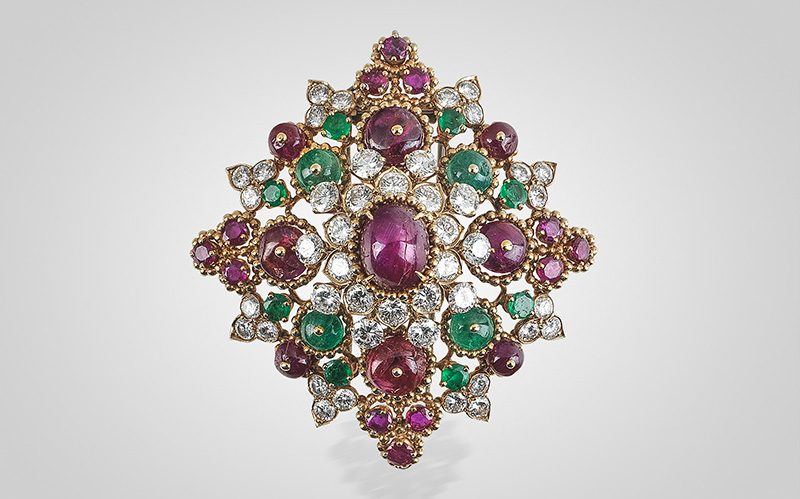
LIKE A ROLLING STONE
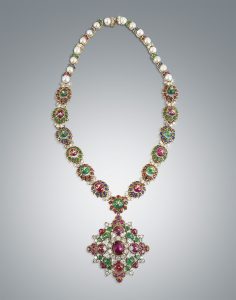
Shiny, bold, sparkly, scintillating. The jewellery creations of the 1960s are remarkable for their diversity and innovation and are the very embodiment of flower power.
Are you a lover of Brahms or is Woodstock more your thing? An elegant evening gown or a sleek and cheeky miniskirt? Nouvelle Vague or Spaghetti Western? The 1960s were a melting pot of influences and contradictions, and this not least in the design and creation of jewellery.
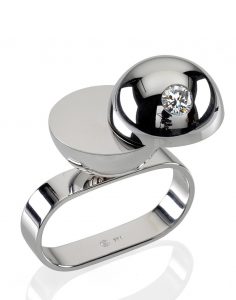
The cool luminosity of platinum and white gold had long been the preserve of haute joaillerie, an accessory for the graceful designs of haute couture. The warm lustre of yellow gold in contrast, evoking the feeling of carefree summer days at the sea, reflected the emergent exuberance of 1960s flower power, and jewellery designers increasingly turned to yellow gold for their creations, both for daily wear and festive occasions.
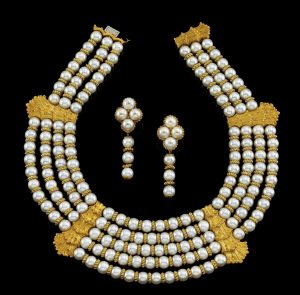
Gone was the stuffy separation of previous times, between a formality and grandeur of design and materials, and the playful freshness of sparkling colourful fun. As the trend developed, the choice of styles and use of materials also widened. People wore what they liked, and it couldn’t be ostentatious enough. Contrast was to be celebrated! (3)
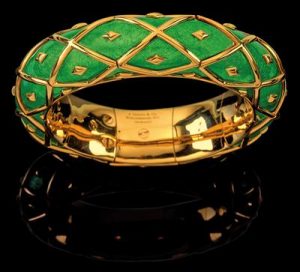
Part of the much-imitated “Jackie style” is embodied in the Croisillon Bracelets designed for Tiffany by Jean Schlumberger, which Jackie owned in multiple colours and combined in diverse ways. (4) Today, they are simply called “Jackie Bracelets”.
The use of enamel in the design and decoration of jewellery created the opportunity for a new, lighthearted handling of colour. In the USA, David Webb used enamel particularly for creating animal motifs. (7) In Europe, Bulgari adopted this trend in the Serpenti series. (8) The Italian jeweller has a longstanding tradition of using the ancient motif of the serpent in its designs, and over the years, it has developed into a kind of unofficial trademark for the firm.
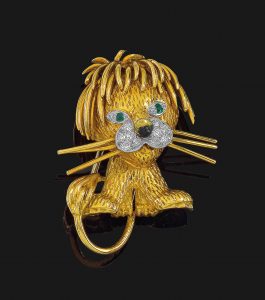
With its “Boutique” series, Van Cleef & Arpels created bright animal-themed brooches, playful and charming, designed to make the wearer smile. They have never lost their magic and achieve the top bids at auction. (5)
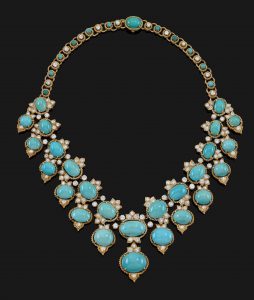
Van Cleef & Arpels make opulent and gorgeously coloured creations for their evening-wear collections. The emphasis is not so much on the value of the stones themselves but on their vivid colours andthe exquisite craftsmanship evident in the manufacture of their designs . (6)
With the commission from the Empress Farah Diba of Persia to create a new imperial crown, came an infusion of Oriental style into the designs of Van Cleef & Arpels and these influences were also adopted by other international jewellery houses.
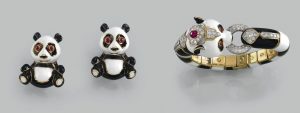
Diverse stones, in various cut shapes
are fashioned into a single jewel, producing a colourful and multifaceted configuration. (1)
The many possibilities of combining individual pieces of jewellery such as brooches, bracelets and colliers, enable the wearer to transform often overly formal parures, or complete jewellery sets, into casual accessories for everyday wear.
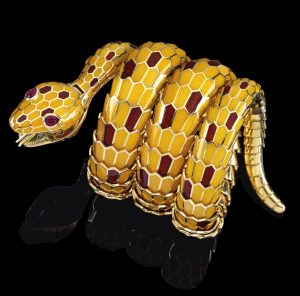
Another internationally acclaimed development in the combining of different materials was introduced by the German aircraft manufacturer, machine fitter and goldsmith, Friedrich Becker, with his creation of “kinetic jewellery”. Seemingly gravity-free, his jewellery moves fluidly with the movement of the wearer. Steel is used as a basic material and is combined with synthetic materials, gold and
precious stones. (2)
As we see, the diverse approaches to jewellery-making and design perfectly reflect the Zeitgeist of the 1960s. Wear what you like! Anything goes! Like a rolling stone!
INFORMATION about the AUCTION
Auction date: Jewellery auction, 23th October 2019, 2 p.m.
Location: Palais Dorotheum, Dorotheergasse 17, 1010 Vienna
Exhibition: 4th October 2019 – 23th October 2019











